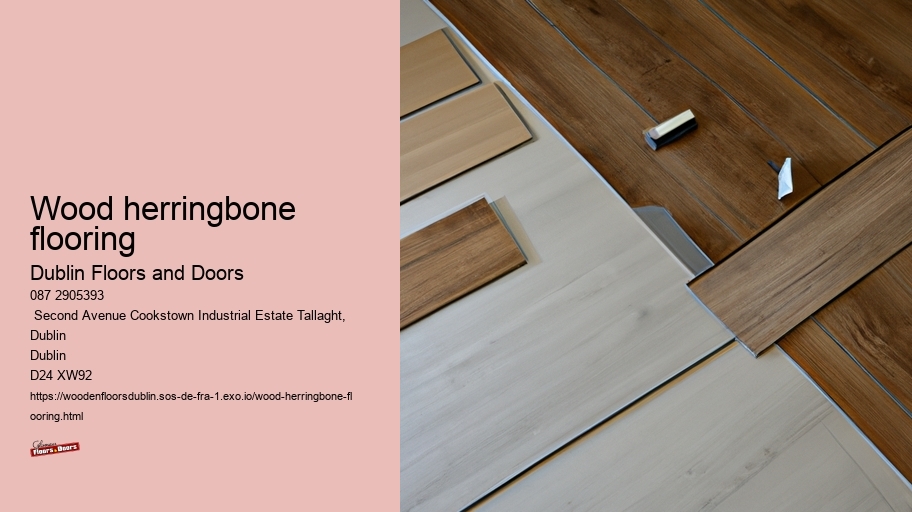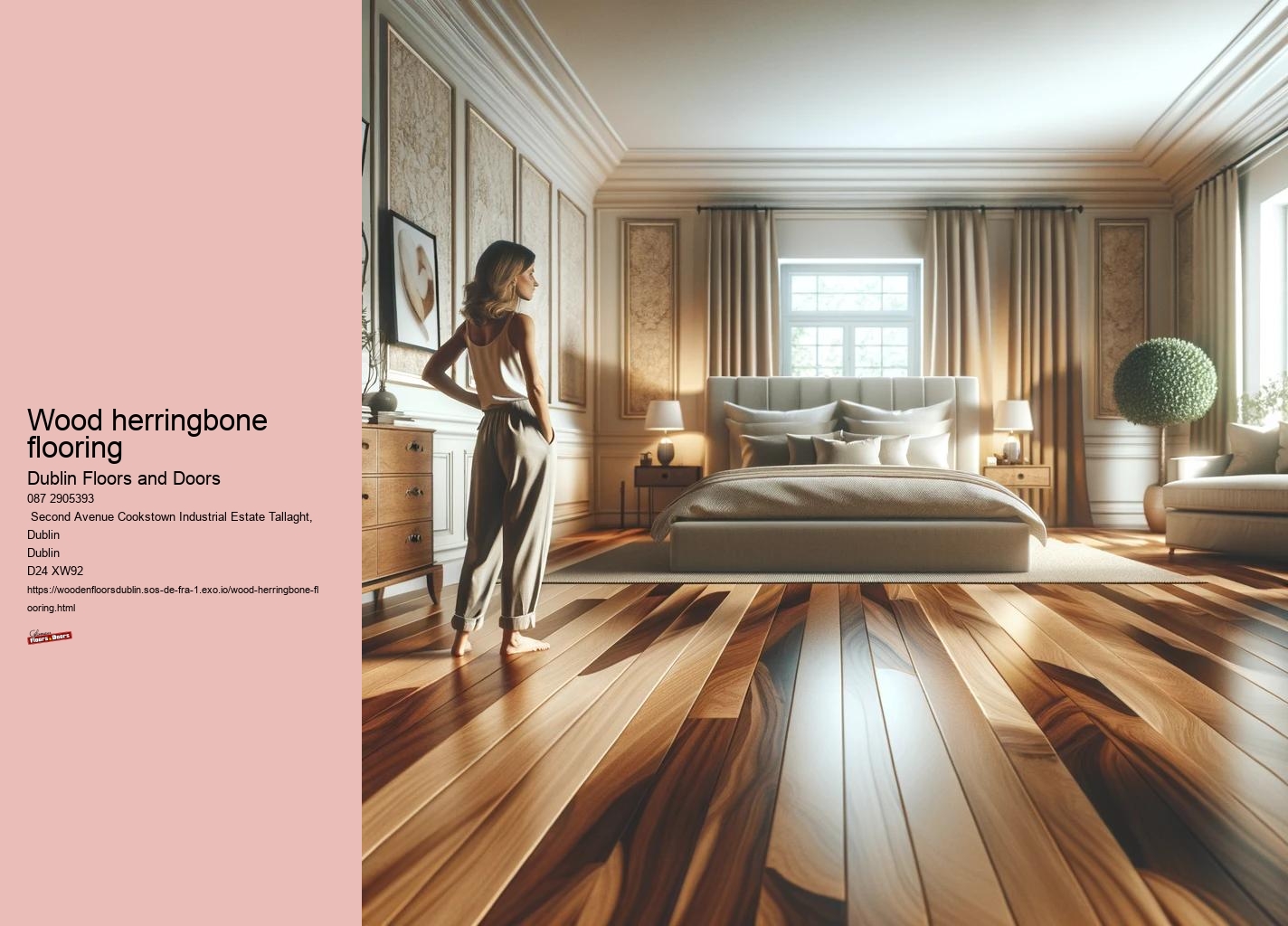

Begin by acclimating the Nebraska Calvery planks to the room's temperature and humidi-ty for at least 48 hours.
Start laying the planks from the longest wall, working from left to right, and remember to leave a small gap around the edges for expansion. Once installed, make sure to clean the floor thoroughly and apply a recommended sealant for protection and longevity.
Sustainable and Eco-Friendly Choice, In light of increasing environmental awareness and the importance of sustainable practices, the Nebraska Calvery flooring stands out as a commendable choice due to its eco-friendly attributes.
Made from natural materials, Nebraska Calvery promotes sustainability by utilizing wood from responsible forestry practices. This flooring option minimizes environmental impact by supporting ethical sourcing methods and reducing carbon footprint during production.
Additionally, Nebraska Calvery's durable nature ensures longevity, decreasing the need for frequent replacements and further contributing to eco-conscious living. Choosing Nebraska Calvery not only adds a touch of natural elegance to your space but also aligns with eco-friendly values, making it a preferred option for those seeking sustainable floor-ing solutions.
Nebraska Calvery in Modern Interior Design, Exemplifying a blend of natural charm and contemporary flair, Nebraska Calvery flooring effortlessly enhances the aesthetic appeal of modern interior spaces. With its natural wooden look featuring knots and florets in a soft, natural shade, Nebraska Calvery brings a touch of rustic elegance to any room.
Laminate floors are composed of multiple layers that are fused together through a lamination process. Here's a breakdown of the typical layers found in laminate flooring:
1. **Wear Layer**: The top layer is a clear, protective coating made from aluminum oxide or melamine resin. This layer provides resistance to scratches, stains, and wear, ensuring the durability of the flooring.
2. **Decorative Layer**: Below the wear layer is a high-resolution photographic layer that mimics the appearance of natural materials such as wood, stone, or tile. This decorative layer gives laminate flooring its realistic look.
3. **Core Layer**: The core of laminate flooring is usually made from high-density fiberboard (HDF) or medium-density fiberboard (MDF). This layer provides stability, strength, and resistance to impacts and moisture.
4. **Backing Layer**: The bottom layer is a melamine resin layer that provides additional stability and moisture resistance. It also helps balance the floor to prevent warping.
### Composition Details:
- **Aluminum Oxide**: A compound used in the wear layer for its hardness and durability.
- **Melamine Resin**: A type of plastic used in the wear and backing layers for its strength and moisture resistance.
- **High-Density Fiberboard (HDF)**: A dense, engineered wood product made from wood fibers bonded with resin under heat and pressure.
- **Medium-Density Fiberboard (MDF)**: Similar to HDF but with a slightly lower density, used in some laminate cores.
### Key Characteristics:
- **Durability**: Laminate floors are highly durable and resistant to scratches, dents, and fading.
- **Affordability**: Typically more cost-effective than hardwood or stone flooring while offering similar aesthetics.
- **Easy Installation**: Often designed with click-lock or tongue-and-groove systems that make DIY installation straightforward.
- **Versatility**: Available in a wide range of styles and designs to match various decors.
- **Low Maintenance**: Easy to clean and maintain, requiring only regular sweeping and occasional damp mopping.
Laminate flooring is a popular choice for homeowners seeking the look of natural materials without the high cost or maintenance requirements.
Maintaining laminate floors involves regular cleaning and care to ensure their longevity and appearance. Here are some key steps and tips for maintaining laminate floors:
### Regular Cleaning
1. **Sweeping or Vacuuming**: Regularly sweep or vacuum your laminate floors to remove dust, dirt, and debris. Use a soft-bristle broom or a vacuum cleaner with a hard floor attachment to avoid scratching the surface.
2. **Damp Mopping**: Clean the floor with a damp mop (not wet) using water or a laminate floor cleaner. Avoid using excessive water as it can seep into the seams and cause damage. Wring out the mop thoroughly before using it on the floor.
### Spot Cleaning
3. **Spills and Stains**: Wipe up spills immediately with a dry or slightly damp cloth. For stubborn stains, use a mild cleaner specifically designed for laminate floors. Avoid abrasive cleaners, steel wool, or scouring pads as they can damage the surface.
4. **Streaks and Residue**: If you notice streaks or residue after mopping, buff the area with a dry microfiber cloth. Make sure to use a cleaner that doesn’t leave a residue.
### Protective Measures
5. **Furniture Pads**: Attach felt pads to the bottoms of furniture legs to prevent scratches when moving furniture. Avoid dragging heavy objects across the floor.
6. **Rugs and Mats**: Place rugs or mats at entryways to reduce the amount of dirt and moisture brought onto the floor. Use non-slip, non-rubber-backed mats to avoid any potential damage to the floor.
7. **Humidity Control**: Maintain consistent indoor humidity levels (between 35% and 65%) to prevent the laminate from expanding or contracting. Use a dehumidifier in humid climates and a humidifier in dry climates.
### Avoiding Damage
8. **High Heels and Pet Nails**: Avoid walking on laminate floors with high heels or cleats, as they can cause dents or scratches. Trim your pets' nails regularly to prevent them from scratching the floor.
9. **Sunlight Exposure**: Prolonged exposure to direct sunlight can cause the laminate to fade. Use curtains or blinds to limit direct sunlight or rearrange furniture periodically to ensure even exposure.
### Long-Term Care
10. **Refinishing**: Unlike hardwood floors, laminate floors cannot be refinished. If the floor gets damaged or worn out, you may need to replace the affected planks or consider a full replacement if necessary.
### Additional Tips
- **Avoid Wax or Polish**: Do not use wax, polish, or oil-based products on laminate floors as they can create a slippery surface and damage the finish.
- **Gentle Cleaners**: Use gentle cleaners that are pH neutral and specifically designed for laminate floors. Avoid using harsh chemicals like ammonia, bleach, or vinegar.
- **Professional Cleaning**: Consider professional cleaning periodically to keep your laminate floors in top condition.
By following these maintenance tips, you can keep your laminate floors looking clean and beautiful for many years.
Maintaining laminate floors involves regular cleaning and care to ensure their longevity and appearance. Here are some key steps and tips for maintaining laminate floors:
### Regular Cleaning
1. **Sweeping or Vacuuming**: Regularly sweep or vacuum your laminate floors to remove dust, dirt, and debris. Use a soft-bristle broom or a vacuum cleaner with a hard floor attachment to avoid scratching the surface.
2. **Damp Mopping**: Clean the floor with a damp mop (not wet) using water or a laminate floor cleaner. Avoid using excessive water as it can seep into the seams and cause damage. Wring out the mop thoroughly before using it on the floor.
### Spot Cleaning
3. **Spills and Stains**: Wipe up spills immediately with a dry or slightly damp cloth. For stubborn stains, use a mild cleaner specifically designed for laminate floors. Avoid abrasive cleaners, steel wool, or scouring pads as they can damage the surface.
4. **Streaks and Residue**: If you notice streaks or residue after mopping, buff the area with a dry microfiber cloth. Make sure to use a cleaner that doesn’t leave a residue.
### Protective Measures
5. **Furniture Pads**: Attach felt pads to the bottoms of furniture legs to prevent scratches when moving furniture. Avoid dragging heavy objects across the floor.
6. **Rugs and Mats**: Place rugs or mats at entryways to reduce the amount of dirt and moisture brought onto the floor. Use non-slip, non-rubber-backed mats to avoid any potential damage to the floor.
7. **Humidity Control**: Maintain consistent indoor humidity levels (between 35% and 65%) to prevent the laminate from expanding or contracting. Use a dehumidifier in humid climates and a humidifier in dry climates.
### Avoiding Damage
8. **High Heels and Pet Nails**: Avoid walking on laminate floors with high heels or cleats, as they can cause dents or scratches. Trim your pets' nails regularly to prevent them from scratching the floor.
9. **Sunlight Exposure**: Prolonged exposure to direct sunlight can cause the laminate to fade. Use curtains or blinds to limit direct sunlight or rearrange furniture periodically to ensure even exposure.
### Long-Term Care
10. **Refinishing**: Unlike hardwood floors, laminate floors cannot be refinished. If the floor gets damaged or worn out, you may need to replace the affected planks or consider a full replacement if necessary.
### Additional Tips
- **Avoid Wax or Polish**: Do not use wax, polish, or oil-based products on laminate floors as they can create a slippery surface and damage the finish.
- **Gentle Cleaners**: Use gentle cleaners that are pH neutral and specifically designed for laminate floors. Avoid using harsh chemicals like ammonia, bleach, or vinegar.
- **Professional Cleaning**: Consider professional cleaning periodically to keep your laminate floors in top condition.
By following these maintenance tips, you can keep your laminate floors looking clean and beautiful for many years.
Wooden floors can be environmentally friendly, but their impact depends on several factors such as the type of wood, the sourcing practices, and the manufacturing process. Here are key considerations to determine the environmental friendliness of wooden floors:
### Factors Affecting Environmental Friendliness
1. **Sustainable Sourcing**:
- **Certification**: Look for wood certified by organizations like the Forest Stewardship Council (FSC) or the Programme for the Endorsement of Forest Certification (PEFC). These certifications ensure the wood is harvested from sustainably managed forests.
- **Local Sourcing**: Choose wood sourced locally to reduce the carbon footprint associated with transportation.
2. **Type of Wood**:
- **Reclaimed Wood**: Using reclaimed or recycled wood reduces the need for new trees to be cut down and gives new life to materials that would otherwise be discarded.
- **Fast-Growing Species**: Opt for wood from fast-growing species like bamboo or cork, which regenerate more quickly than hardwoods like oak or maple.
3. **Manufacturing Process**:
- **Low-Emission Adhesives**: Choose wood products manufactured using low-emission adhesives and finishes to minimize the release of volatile organic compounds (VOCs) that can harm indoor air quality and the environment.
- **Energy-Efficient Production**: Support companies that use energy-efficient production methods and renewable energy sources in their manufacturing processes.
4. **Longevity and Durability**:
- **Durable Wood Types**: Select hardwood species known for their durability, which can last for decades and reduce the need for frequent replacement.
- **Proper Maintenance**: Properly maintaining wooden floors extends their lifespan, reducing the environmental impact associated with replacement and disposal.
5. **End-of-Life Considerations**:
- **Recyclability**: Wooden floors are biodegradable and can be recycled or repurposed at the end of their life cycle.
- **Disposal**: Unlike synthetic flooring materials, wood can decompose naturally, minimizing environmental harm.
### Benefits of Wooden Floors
- **Carbon Sequestration**: Trees absorb carbon dioxide as they grow, and this carbon remains stored in the wood throughout its lifespan.
- **Renewable Resource**: Wood is a renewable resource, especially when sourced from responsibly managed forests.
- **Biodegradability**: Wood is biodegradable, reducing waste and environmental pollution compared to non-biodegradable flooring materials.
### Potential Environmental Drawbacks
- **Deforestation**: Unsustainable logging practices can lead to deforestation, habitat destruction, and biodiversity loss.
- **Transport Emissions**: Transporting wood over long distances can result in significant carbon emissions.
- **Chemical Treatments**: Some wooden floors may be treated with chemicals that can harm the environment and human health.
### Making Environmentally Friendly Choices
To ensure your wooden floors are environmentally friendly, consider the following steps:
1. **Research Suppliers**: Choose suppliers committed to sustainable practices and transparent about their sourcing and manufacturing processes.
2. **Check Certifications**: Look for wood products with credible environmental certifications.
3. **Opt for Quality**: Invest in high-quality, durable wood flooring that will last longer and require less frequent replacement.
4. **Consider Alternatives**: Explore eco-friendly alternatives like bamboo, cork, or reclaimed wood, which can offer similar aesthetics with a lower environmental impact.
By making informed choices, you can enjoy the beauty and durability of wooden floors while minimizing their environmental impact.
This flooring option is a versatile choice for modern interior design, adding warmth and character while complementing a variety of décor styles. Whether used in a minimalist, Scandinavian-inspired setting or a more eclectic bohemian space, Nebraska Calvery's timeless appeal and organic texture create a welcoming atmosphere.
Its ability to seamlessly integrate into contemporary design schemes makes it a popular choice for homeowners and interior designers looking to infuse spaces with a touch of nature-inspired sophistication.
Nebraska Calvery's reputation for blending natural charm with contemporary flair ex-tends to its remarkable durability and longevity as a wooden flooring option.


The high-quality materials used in its construction ensure that these floors can withstand heavy foot traffic, daily wear and tear, and other impacts without losing their beauty. With proper care and maintenance, Nebraska Calvery wooden floors can last for decades, making them a wise investment for any home or commercial space.
Whether you choose it for its natural look, durability, or both, Nebraska Calvery wooden floors are sure to bring warmth and elegance to any environment.
Customization Options for Nebraska Calvery, Enhancing the appeal of Nebraska Calvery wooden floors is the array of customizable options available to tailor the flooring to indi-vidual preferences and design schemes. Customers can choose from various finishes, including matte or glossy, to achieve their desired look.
Additionally, customization options extend to the choice of wood species, with selections ranging from oak to maple, allowing for a personalized touch to suit different interior styles.
With these customizable options, Nebraska Calvery offers a versatile solution for creat-ing unique and tailored wooden floors that elevate the aesthetic of any space.
Several delighted customers have shared their positive experiences with the Nebraska Calvery wooden floors, highlighting the exceptional quality and timeless elegance they bring to their homes. One customer, Sarah M., praised the rich natural wooden look with knots and florets, stating that it added a touch of rustic charm to her living room.

Another customer, John D., mentioned that the Nebraska Calvery Matt in a natural shade transformed his kitchen, making it warm and inviting.These testimonials showcase the satisfaction and joy customers experience with Nebraska Calvery floors, emphasizing their ability to enhance the aesthetic appeal of any space while providing durability and elegance. Join the ranks of satisfied customers and discover the beauty of Nebraska Cal-very in your home today.
With its opulent gloss finish and timeless Irish Dublin Oak design, this laminate flooring exudes sophistication and resilience for discerning homeowners. The allure of its luxuri-ous appearance is matched only by its practicality and ease of maintenance, making it a compelling choice for those seeking a blend of style and durability in their living spaces.
As we explore the intricate details of this exquisite flooring option, you'll discover why the Irish Dublin Oak stands out as an exceptional choice for enhancing the ambiance of any room. Incorporating a gloss finish, the Irish Dublin Oak laminate flooring exudes an air of sophistication and luxury suitable for residential spaces. The glossy sheen adds a touch of elegance, enhancing the overall aesthetic appeal of any room.
This laminate flooring option boasts a traditional oak effect, providing a classic yet stylish look. Not only does it offer a rich luxurious finish, but it is also known for its hard-wearing nature and easy-to-clean surface.
The glueless click installation system ensures a hassle-free setup process, making it a practical choice for homeowners looking to elevate their interiors with a touch of opu-lence. Dublin Oak laminate flooring is a perfect blend of style and functionality, ideal for those seeking both durability and aesthetic appeal.
Luxurious Appeal of Irish Dublin Oak,The opulent allure of the Irish Dublin Oak laminate flooring lies in its glossy finish that exudes sophistication and luxury, making it a standout choice for residential settings seeking a touch of elegance. This flooring option not only enhances the visual appeal of a space but also adds a sense of grandeur and richness. The glossy finish of the Irish Dublin Oak creates a luminous effect, reflecting light and making the room appear more spacious and bright.

Installation time varies based on room size, wood type, and installation method, but it generally takes 1-3 days for an average-sized room.